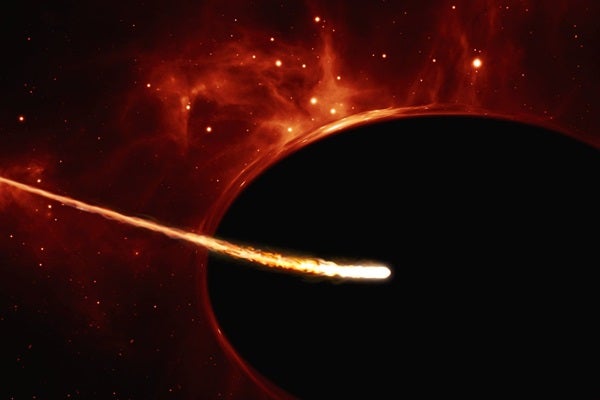New observations from several observatories show that what was thought to be the brightest supernova ever might have been an optical illusion of sorts.
ASASSN-15lh was first detected by the All Sky Automated Survey for Supernova (ASASSN) and was declared a superluminous supernova. It was 20 times brighter than the total light output of the entire Milky Way, giving it the title of brightest supernova.
However, a team of scientists led by Giorgos Leloudas at the Weizmann Institute of Science and the Dark Cosmology Centre has proposed an alternative explanation for ASASSN-15lh.
Due to reserach from observatories, including ESO’s Paranal Observatory, The New Technology Telescope at ESO’s La Silla Observatory, and the NASA/ESA Hubble Space Telescope, the team of astronomers believe that the bright light didn’t come from ASASSN-15lh, but instead from a rapidly spinning black hole that was destroying a star that was too close.
“We observed the source for 10 months following the event and have concluded that the explanation is unlikely to lie with an extraordinary bright supernova,” Leloudas said in a press release. “Our results indicate that the event was probably caused by a rapidly spinning supermassive black hole as it destroyed a low-mass star.”
What they believe happened was that the Sun-like star had gotten too close to a supermassive black hole and the gravitational forces stretched the star vertically and compressed it horizontally until it was destroyed. Then the colliding debris and the heat generated from the destruction caused the bright burst of light.
“There were several independent aspects to the observations that suggest that this event was indeed a tidal disruption and not a superluminous supernova,” said Morgan Fraser from the University of Cambridge, UK, and coauthor of the study.
The team states that this is a rare event and can only occur with a very specific type of black hole.










